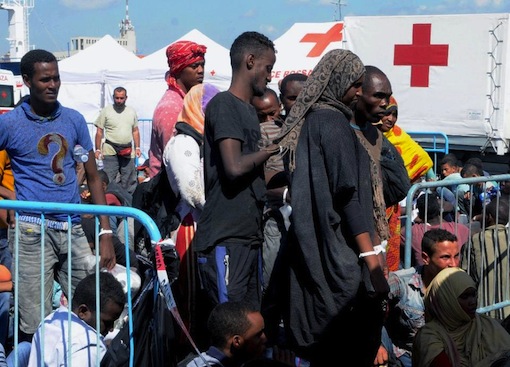12th August, 2017

The International Organization for Migration (IOM) has released a new report through its Niger Republic office, profiling the trauma migrants are passing through in its transit centres in West Africa.
The report revealed widespread misinformation, or lack of information on the fate of their journeys and the living conditions in countries of temporary residence, particularly Libya.
“One of the main highlights of the report are the risks that many of these migrants who embark on this route face during their journeys through the desert and their stay in Algeria, Libya or Niger.
“More than 60 per cent of the migrants who resided in either Libya or Algeria testified to having been subjected to various types of violent or abusive treatments.
“Physical violence as well as different types of threats and psychological abuse were the types of ill treatment most frequently reported by migrants,” the report stated.
IOM said most of the migrants were West African nationals who arrived in IOM transit centres, having resided in Algeria or Libya, largely with the intention of returning to their countries of origin.
“In terms of socio-demographic profiles, 93 per cent of the migrants were male, while 72 per cent of the migrants were between 18 to 29 years old.
“Almost half of the assisted across the four transit centres in 2016 came from Guinea (24 per cent) and Senegal (21 per cent).
“The majority of women assisted came from Niger (36 per cent) and Nigeria (27 per cent) and most of them had been residing in Niger before arriving at IOM’s transit centres.
“The interviews bring evidence of the lack of economic opportunities for many West and Central African migrants. Almost 90 per cent of the migrants interviewed reported they left their countries of origin in search of better livelihood opportunities.
“And, contrary to the 2014 trend when most of the profiled migrants had no education, 60 per cent of the migrants interviewed across the four transit centres declared they had received some type of formal education.”
READ: Kenyatta wins presidential poll in Kenya
Among those who experienced abuse, more than one in three in Libya or Algeria were subjected to violent treatment, and more than one in three in Niger said they faced a number of threats and psychological violence, IOM stated.
Other common types of abuses were food deprivation, confiscation of salary, confiscation of money, or restriction of movement, it added.
“Migrants take this journey in the hope of finding a better life and to support their families back home,” IOM Migrant Resource and Response Mechanism Programme Manager, Alberto Preato, declared.
“We must put ourselves in their shoes and imagine how the lack of opportunities back home is pushing them to take tremendous risks, and how difficult it is to make their way back,” he stressed.
The report stated an indication that return flows, particularly from Libya, were on the rise due to the exacerbation of violence and the greater dangers faced by migrants residing in the country.
Although the report highlighted the harsh realities of this route, it also showed that after what they experienced, 68 percent who had taken the route had no intention of continuing their migratory journeys.


